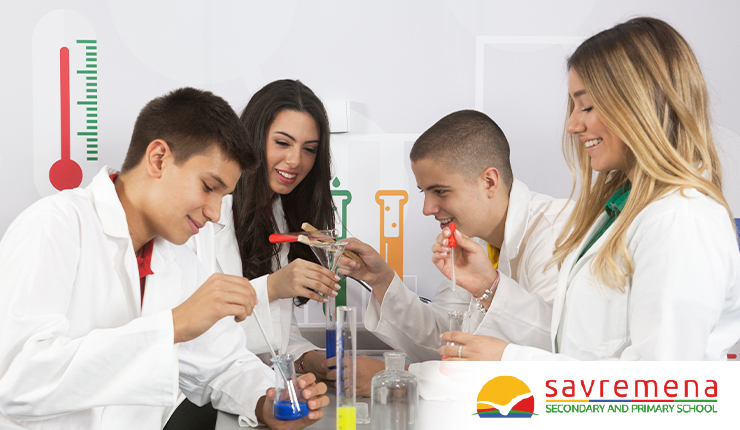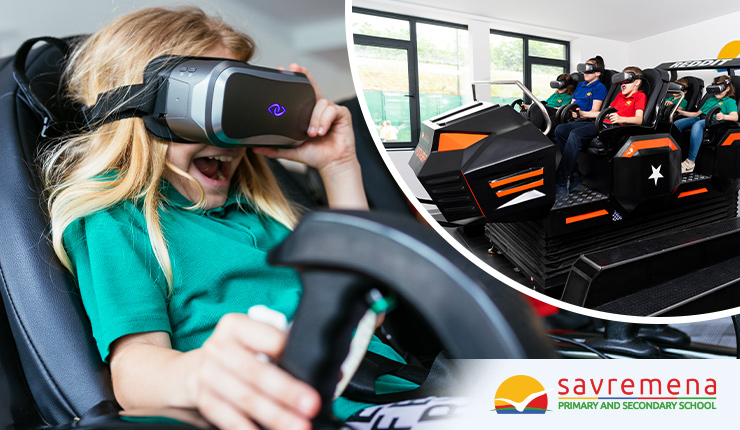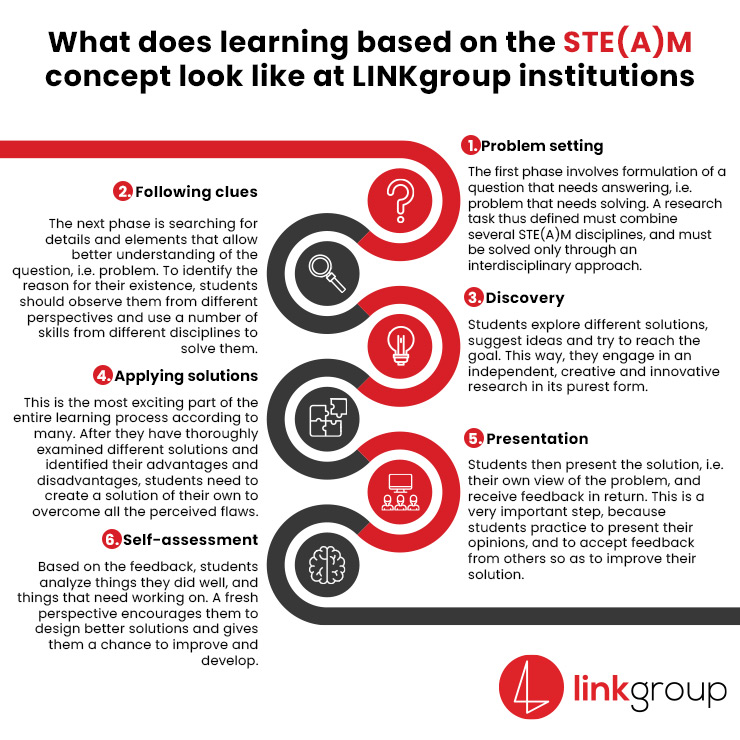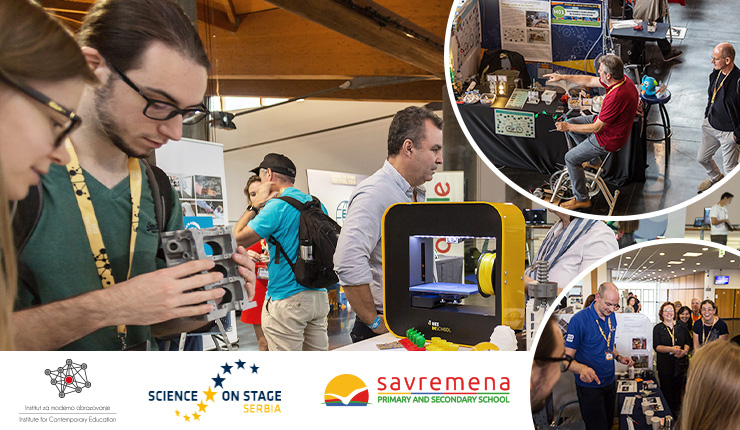Institutions of the LINK Edu Alliance provide their students with the most complete STE(A)M education in this part of Europe
In the dynamic 21st century, old professions disappear and new professions are created every day, so traditional education often fails to provide students with the knowledge that enables them to become productive members of society, and to find employment. The research is categorical:
- Traditional education changes slowly and adapts poorly to rapid changes, because it was designed in the period when this scope of technological development was hard to imagine.
This is why the world needs new forms of education, such as STE(A)M.
STE(A)M is a modern approach to education implemented at all education levels, and nurtured in some of the best educational institutions around the world. It is based on the idea that an interdisciplinary approach should enable students to be trained in five academic disciplines at the same time:
- Science;
- Technology;
- Engineering;
- Arts;
- Mathematics.
Thanks to LINKgroup which has always been a leader in educational innovations, this advanced concept is available to students in Serbia and the region.
Combining five academic disciplines brings a number of benefits – What are they?
Between 400 and 800 million people will have to look for new jobs by 2030, because their job positions will have been automated. In addition, the estimates say that between 8% and 9% of all available jobs in the labor market will be entirely new professions that have never existed before.
Unlike the previous eras, modern education strives to prepare students not only for existing job positions, but also for professions that don’t yet exist.
As a result, the aim of this new form of education is to replace the outdated and anachronous approach where S, T, E, A and M are taught as separate courses with a new STEAM educational paradigm where these disciplines are combined into one, and students are prepared for the future. This way, students can acquire synthesized knowledge of five disciplines as a whole, and at the same time learn how to successfully implement this theory in real-life circumstances, both present and future.
Students educated through the STE(A)M approach will find employment more easily in the future. They will develop creativity, innovativeness, critical thinking, problem-solving skills, as well as many other skills that will make their life and work easier, regardless of their chosen profession.
Educational evolution from STEM to STEAM, or how Art has enriched and complemented STEM education
Rapid technological development has increased the demand for scientists, technologists, engineers and mathematicians. However, there weren’t nearly enough of them, and one of the main reasons was the inadequacy of the education system. This is why STEM was created. Its goal was to reduce the gap between the supply and demand for jobs on one hand, and to educate experts that will be able to address complex problems imposed by the development of society and economy in the 21st century on the other.
STEM allowed students to acquire knowledge of science, technology, engineering and mathematics in a new and efficient way, while cultivating an interdisciplinary approach, collaboration and simultaneous focus on scientific paradigms, and the possibilities of their real-life applications.
However, something was missing – an element some of the most successful employers emphasize as a key characteristic when hiring new candidates, an ingredient that allows the aforementioned four disciplines to truly complement each other and makes them applicable in different business and life situations: creativity and innovativeness.
This is why the fifth discipline, Art, was added to STEM education. The STEAM concept of education was born from the combination of Art with Science, Technology, Engineering and Mathematics. Thanks to this fusion, students are able to creatively combine four technical disciplines through artistic practices, design elements and standards.
STEAM is therefore the most advanced form of education, within which interdisciplinary STEM education is complemented by art, and the idea is to encourage students’ creative thinking and innovation tendencies, thus helping them to acquire one of the most important business competencies.

In addition, by studying art and social sciences, children develop ethics, moral values and the sense of responsibility, thus strengthening their emotional intelligence. History teaches us that possessing knowledge and skills without empathy may lead to catastrophic results. With that in mind, it is clear that art adds a layer of inclusiveness and sustainability to STEM education, and that this form of education has reached its full potential only with the inclusion of art.
How did the LINK Alliance manage to implement STE(A)M into its institutions at all levels of education?
To respond to the needs of the labor market, and to increase our students’ chances of successfully responding to future economic demands, we have to offer them a fluid, dynamic, and above all, relevant education and training. Aware of the potential of the STE(A)M educational concept, we have provided them with some of the best educational programs based on science, technology, engineering, art and mathematics.
STE(A)M concept is present at all three levels of education, primary, secondary and higher level, in all LINK institutions, including professional academies. Students at each of these institutions have access to this concept of education relative to their curricular needs, education level and preferences.
Innovative equipment, progressive technology, project-based learning, interdisciplinary approach and dedicated teachers are the reasons why STE(A)M education is so successfully implemented at the institutions of the LINK Edu Alliance. By using a multidimensional approach, our students acquire knowledge and skills in a modern way, while at the same time being trained to think independently, experiment and innovate. At the end of their education, they become highly sought-after experts in the global labor market.

The STE(A)M concept implemented at LINK institutions stands for: quality education in line with the highest global standards”. However, it wouldn’t be effective, let alone possible without blended learning. It allows students to familiarize themselves with the scientific method in a creative, engaged and independent way, and to implement it in different areas of their professional and personal life.
STE(A)M education at LINK institutions involves:
- STE(A)M curriculum that includes the basics of programming, robotics, IT, design, practical mathematics, and problem solving;
- use of technology in class (each teacher and student has their own laptop, tablet, VR glasses, they control robots, etc.);
- additional and extracurricular activities focused on STE(A)M disciplines as a complement to traditional classes;
- STE(A)M Days where students are encouraged to engage in individual and practical research of each of the STEAM disciplines with the supervision and discreet teacher support;
- STE(A)M tools, workshops and seminars; and
- Science on Stage festival where teachers and students compete with their colleagues and peers from all over Europe, acquire new knowledge and concepts, and become experts in STE(A)M disciplines.
STE(A)M education creates students who are prepared to take smart risks, utilize different experimental forms of learning, be persistent, students who are capable of teamwork, collaboration and different creative processes.
They are future innovators, educators, leaders and lifelong learners of the 21st century.
Why is STE(A)M education at LINK institutions of the highest quality?
STE(A)M helps students to push their own boundaries by assuming a proactive attitude which involves curiosity, critical thinking and innovativeness.
To implement the STE(A)M concept in a quality manner, LINKgroup institutions make sure the following high criteria are met:
- Collaboration between students and teachers which involves mutual trust, commitment and research orientation;
- Multidisciplinary approach where teachers in different courses collaborate with each other to enable students to link the knowledge of different disciplines, and thus nurture an interdisciplinary approach;
- Equipment that involves state-of-the-art educational and research devices, such as robots, 3D glasses, LEGO STEM, 3D scanners and printers;
- Classrooms and laboratories where students can perform experiments, move freely and explore.
The first interactive space for the acquisition of STE(A)M knowledge and skills – STEAM lab: Preparing students for the future
Students of Savremena are introduced to the STE(A)M educational concept from an early age.
Seven classrooms at Primary School Savremena have been designed and furnished in line with the STE(A)M principles, and we have also realized over 150 STE(A)M projects. In addition, our school possesses the first interactive space for the acquisition of STE(A)M knowledge and skills in the region – STEAM lab. STEAM lab is also available to students of other institutions within the LINK Alliance.
In line with the latest global trends in education, we designed and built a multimedia studio where students acquire important knowledge of science, technology, engineering and mathematics through practical examples, engaging in scientific projects and research activities from an early age, and where they learn how to creatively and proactively implement that knowledge in the real world and everyday life.
STEAM lab is an original, one-of-a-kind LINKgroup patent that allows students of all ages to acquire the most sought-after competencies in the 21st century.
The best way to introduce students to the STE(A)M disciplines is in a specially designed area that provides the best conditions for learning, creativity and innovativeness. STEAM lab is therefore equipped with the latest technologies, such as laptops, tablets, 9D VR Starship and VR glasses, 3D printers, robots, interactive whiteboards and LEGO STEM education sets.
Given that, in addition to technology, significant factors for STE(A)M education include application of theoretical knowledge and practice, collaboration, project-based teaching and dedicated teachers, STEAM lab is designed and implemented as an open space for teamwork, creation of dynamic groups and project-based teaching, managed by dedicated teachers.
Thanks to all this, students never try to skip STE(A)M classes; on the contrary, they want to learn more about their possibilities, master the basics and make an important first step toward becoming STEAM experts. Experimenting in our STEAM lab allows them to acquire new knowledge on their own.

LINK Alliance – the official representative of Science on Stage Europe in Serbia
Quality, continuous and effective application of the STE(A)M concept at the institutions within the LINK Alliance has been recognized by the renowned international organization and initiative for the promotion and advancement of STE(A)M education, Science on Stage Europe, which appointed the Institute for Contemporary Education as its official representative in Serbia.
Science on Stage Europe is the largest European network of STE(A)M teachers with over 100,000 members from more than 30 European countries, and it is slowly expanding to other parts of the world, including Canada, Egypt, Kazakhstan and Georgia. Thanks to this cooperation, the latest tools, workshops, seminars and festivals for the promotion of STE(A)M education are available at the institutions within the LINK Edu Alliance.

By including LINK institutions in this network, we now have an exclusive opportunity to organize Science on Stage teacher training programs for STE(A)M disciplines. Through the professional development of teachers, exchange of ideas and organization of workshops and other educational events, our students have access to an even wider knowledge and resource base, as well as interesting experiments in these disciplines.
One of the most important events is the Science on Stage festival which is being organized for the first time this year in this part of the world. By participating in this event, teachers and students from Serbia will have the opportunity to compete, but above all, to socialize, learn and enjoy themselves with their colleagues and peers from all over Europe.
It is expected that the Institute for Contemporary Education and Science on Stage will significantly raise the quality of education in Serbia, and not only with regard to STE(A)M disciplines. This assumption is supported by the following data:
- 79% of teachers apply the concepts and ideas they adopted in Science on Stage festivals;
- 69% of lecturers said attending Science on Stage workshops increased their motivation, and enthusiasm about their job;
- 50% of teachers established lasting contacts with their colleagues from Europe, and continued to exchange concepts and ideas.
LINK students ready for the 21st century
Not only do advanced STE(A)M concepts allow students to acquire, link and apply knowledge of 5 disciplines in an innovative way, thus becoming respected and sought-after experts, but they also help them to acquire valuable transversal skills highly valued by employers:
- critical thinking,
- creativity,
- teamwork,
- communication,
- presentation, and
- delegation.
Thanks to such a well-rounded, balanced and relevant education, students are capable of adapting to any change in the dynamic market, thus ensuring their own professional success.
To ensure student acceptance to some of the best universities in the world, and to ensure their competitiveness in the labor market, regardless of what the future may bring, LINK educational institutions provide the best STE(A)M education in our country and beyond.



Leave a comment